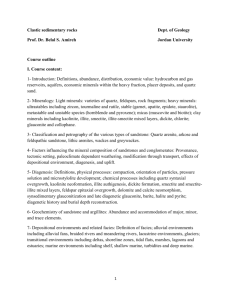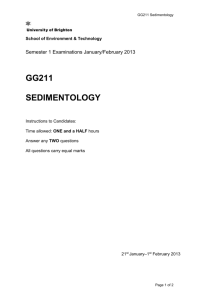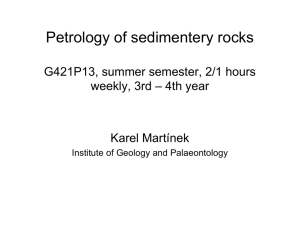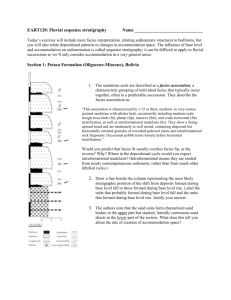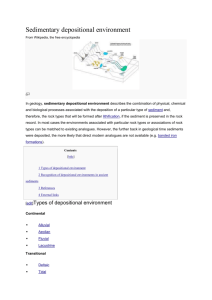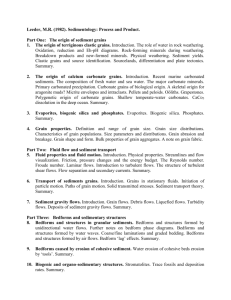Clastic Sedimentary Rocks 0305732
advertisement
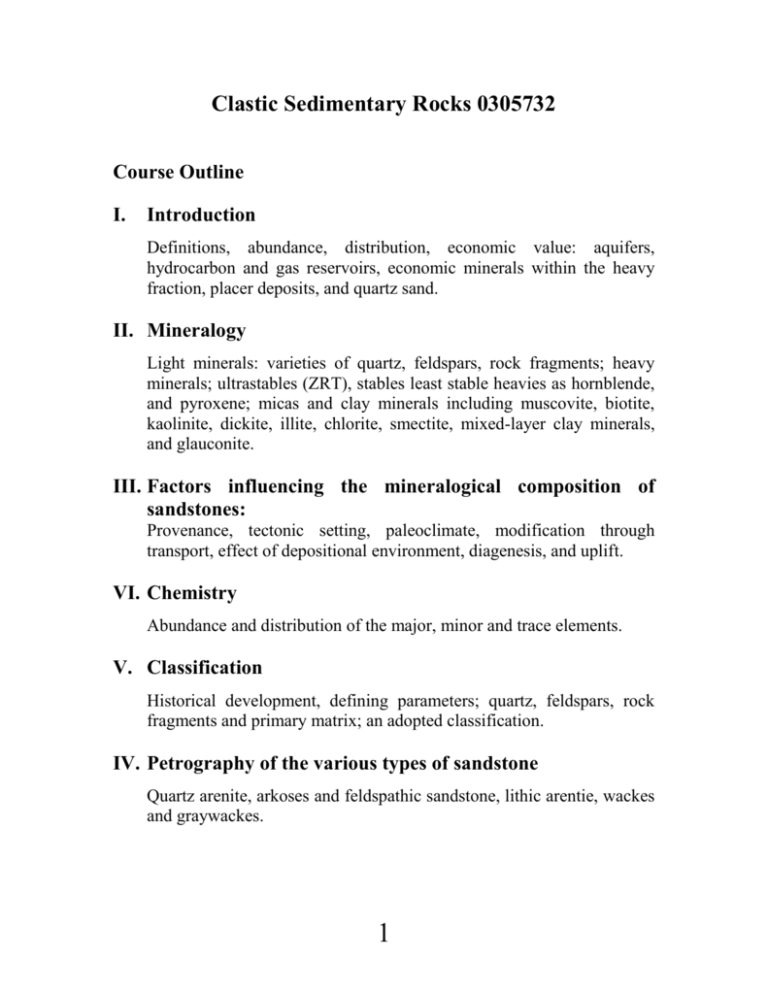
Clastic Sedimentary Rocks 0305732 Course Outline I. Introduction Definitions, abundance, distribution, economic value: aquifers, hydrocarbon and gas reservoirs, economic minerals within the heavy fraction, placer deposits, and quartz sand. II. Mineralogy Light minerals: varieties of quartz, feldspars, rock fragments; heavy minerals; ultrastables (ZRT), stables least stable heavies as hornblende, and pyroxene; micas and clay minerals including muscovite, biotite, kaolinite, dickite, illite, chlorite, smectite, mixed-layer clay minerals, and glauconite. III. Factors influencing the mineralogical composition of sandstones: Provenance, tectonic setting, paleoclimate, modification through transport, effect of depositional environment, diagenesis, and uplift. VI. Chemistry Abundance and distribution of the major, minor and trace elements. V. Classification Historical development, defining parameters; quartz, feldspars, rock fragments and primary matrix; an adopted classification. IV. Petrography of the various types of sandstone Quartz arenite, arkoses and feldspathic sandstone, lithic arentie, wackes and graywackes. 1 IIV. Diagenesis Definitions; physical processes: orientation of particles and compaction, pressure solution and stylolite, development; destructive processes: dissolution of light minerals such as feldspars and intrastratal solution; chemical processes; replacement versus alteration, neoformation, cementation and authigenesis; burial history. XII. Depositional environments and related facies Definition of facies; alluvial environments: alluvial fans, braided rivers and meandering rivers, deltas, shore zone environments: tidal flats, tidal deltas and tidal marsh, lagoon and estuary including beach and barrier island; marine environments. XI. Research Project 1. Field work including measurement of paleocurrent directions, and facies analysis. 2. Grain size analysis by sieving and microscopy. 3. Petrographic study of thin sections and grain mounts. 4. Constructing the diagenetic history of the formation. 5. Determination of the depositional environment and evaluating the factors influencing the mineral composition of the sandstone. References Amireh, B.S. (1987): Sedimentological and Petrological Interplays of the Nubian Series in Jordan with Regard to Paleogeography and Diagenesis. Unpublished Ph. D. Thesis. TU Braunschweig, 232 pp. Blatt, H., Middletion, G. and Murry, R. (1980): Origin of Sedimentary Rocks, 2nd. Ed., 782 pp. New Jersey (Prentice – Hall). Boenigk, W. (1983): Schwermineralanalyse. 158 pp. Stuttgart (Enke). 2 Chilinger, G.V. and Wolf, K.H. (1989): Diagenesis II, Developments in Sedimentology. Amsterdam (Elsevier). McDonald, D.A. and Surdam, R.C. (1984: Clastic diagenesis, AAPG Memoir 37. 434 pp. Tulsa (AAPG). Miall, A.D., 1996. The Geology of Fluvial Deposits. Springer-Verlag, Berlin. Pettijohn, F. J. (1975): Sedimentary rocks, 3rd. ed. 628 pp. New York (Harper and Row Publishers). Pettijohn, F. J., Potter, P.E. and Siever, R. (1986): Sand and Sandstone. 618 pp. New York (Springer-Verlag). Reineck, H.E. and Singh, I. B. (1986): Depositional Sedimentary Environments, 2nd ed. 551 pp. Berlin (Springer-Verlag). Tucker, M.T. (1988): Techniques in Sedimentology. 394 pp. Oxford (Blackwell Scientific Publications). Walker, R.G. (1984): Facies Models, 2nd. Ed. 317 pp. Toronto (Geoscience Canada). 3
